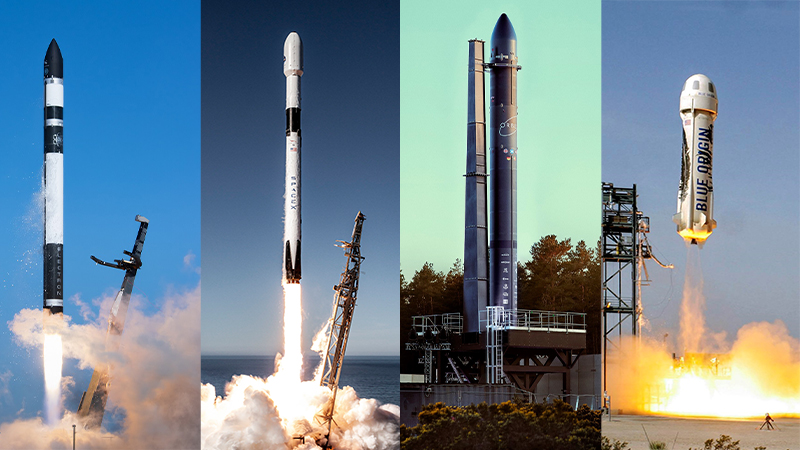

In a previous article, we discussed how space launch vehicles are shifting towards greener and more sustainable usage. As you probably already know, a landmark shift came in the form of reusable launch vehicles.
We’ve discussed elsewhere that most of the market currently leans towards partially recoverable rockets for one reason or another. But it’s worth us going a step further and comparing the major players to understand how their purpose affects their design, and what this could mean for the future.
For the purpose of this article, we’ll focus on SpaceX’s Falcon 9, Blue Origin’s New Shepard, and Rocket Lab’s Electron. While there are other vehicles on the market, these three give us a good cross-section of purposes and design differences.
One major difference is that New Shepard is a fully reusable launch vehicle, whereas the others are only partially reusable. But this comes down to function: New Shepard is a sub-orbital rocket designed to reach the Karman Line, while the others are two-stage orbital rockets.
This is fairly standard in current reusable rockets. The orbital inserter section is typically single-use, which is true for Falcon 9 and Electron. However, this is more or less where their similarities end.
Falcon 9 is designed to carry cargo and crew into Earth orbit – it’s currently the only reusable commercial rocket capable of launching people into orbit. The Electron, on the other hand, is a much smaller launch vehicle that’s designed for low-cost small satellite launches.
Compared to Falcon 9’s 70-metre height, Electron comes in at a modest 18 metres. But it’s designed to carry smaller payloads (up to 300kg to LEO), whereas Falcon 9 can carry 13 tonnes.
Another significant difference comes down to cost. As of 2022, Falcon 9 costs $67 million per launch, while Electron costs around $7.5 million. This is a major difference, meaning Electron has far more accessible launches for smaller satellite companies.
Part of its cost-saving comes from its engine, which is an electric-pump-fed engine. It’s the first rocket engine of its kind, and having electric pumps means 100% of the rocket fuel goes towards thrust rather than powering the pumps. It uses the same octaweb setup as Falcon 9, albeit with smaller engines.
The technologies used in these reusable rockets speak to their purpose as much as their different development processes. New Shepard, for example, is designed for sub-orbital space tourism launches, meaning it’s far easier to make the vehicle fully reusable. It’s not subject to the same environmental stresses as the others, meaning the design can be fairly different.
On the other hand, Falcon 9 and Electron both have reusable first-stage booster sections. Rocket Lab plans to use a mid-air catch recovery by a helicopter once it’s developed the logistics of handling this. While the eventual goal is that both launch vehicles will be fully reusable, there have already been significant time and cost savings as a result of reusable rockets.
And this is the real benefit of reusable launch vehicles: time and cost savings. They mean that commercial companies can facilitate far more launches than ever before, a major advantage for space startups. It’s fair to assume that reusable rockets will be the future of space launches, especially because of the more general environmental benefits.
